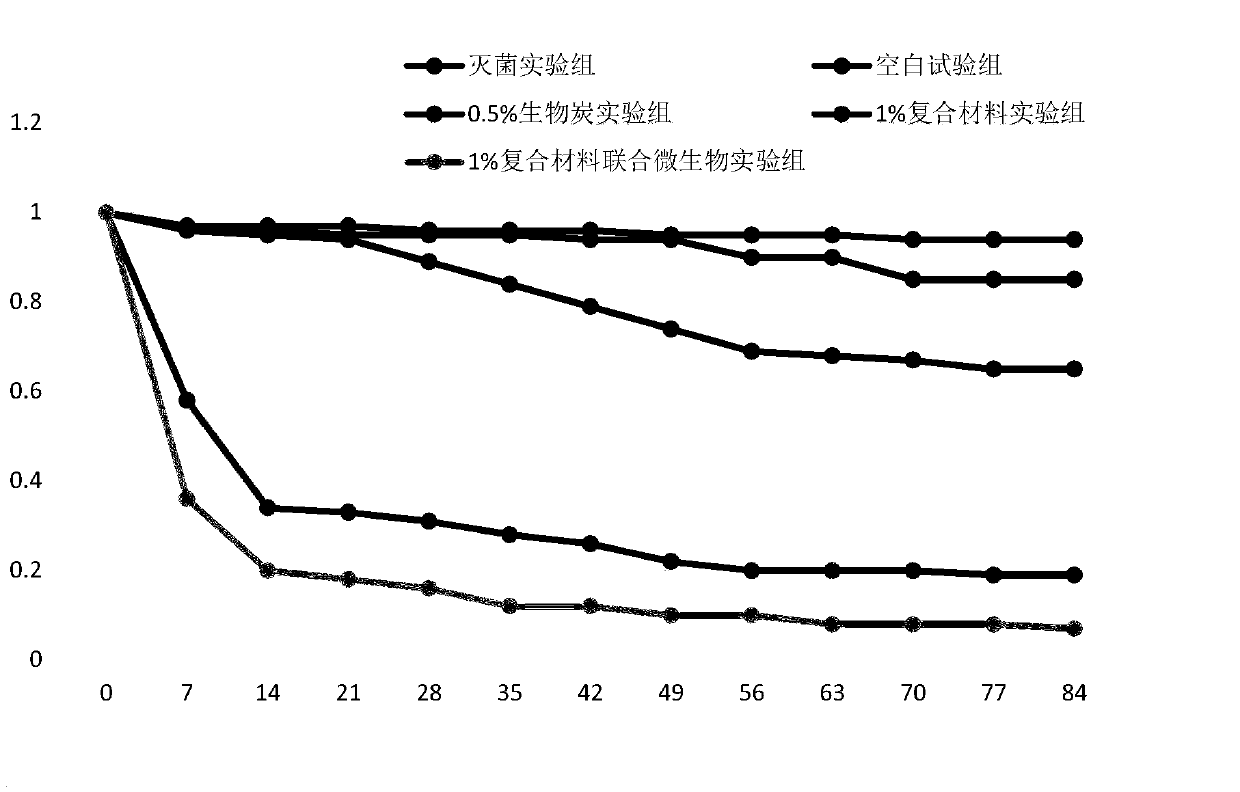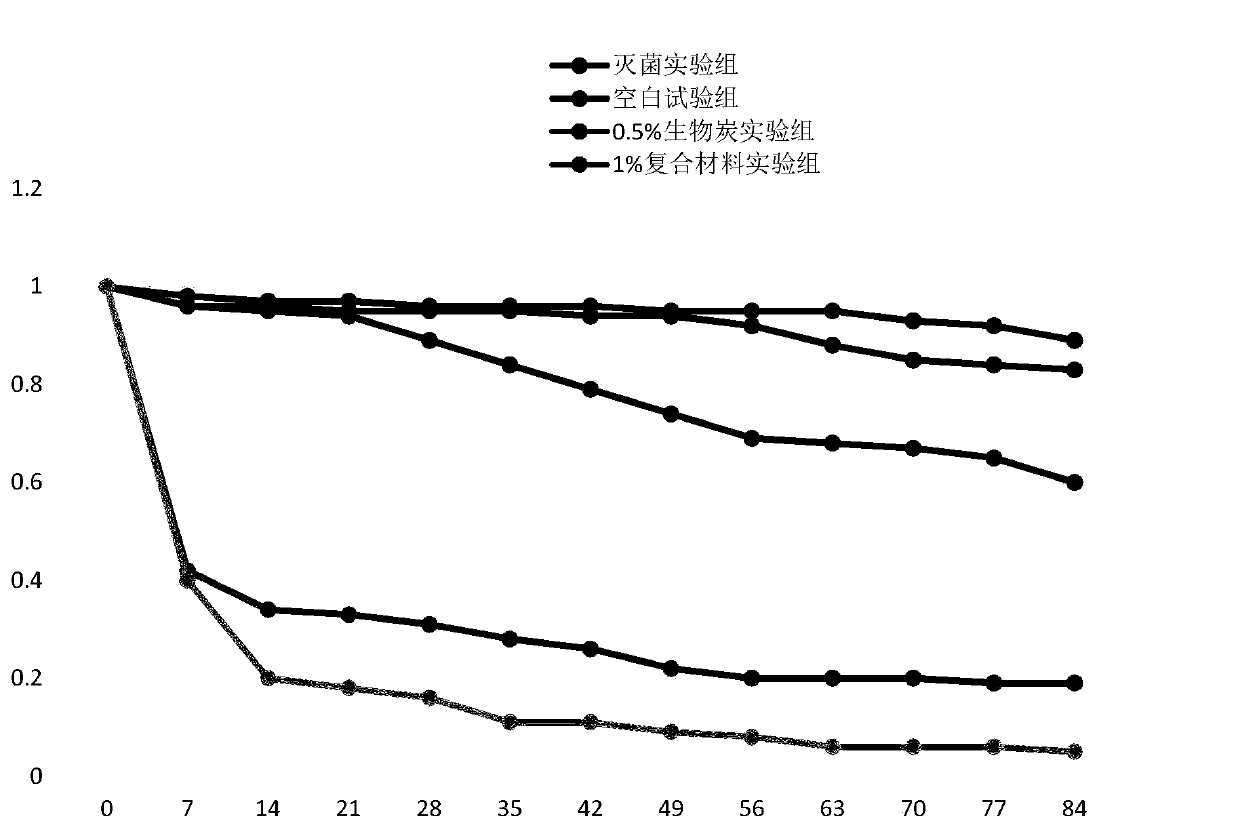Method for remedying OCPs contaminated soil by combining zero-valent iron composite material with microorganisms
A technology of microbial remediation and composite materials, applied in the field of zero-valent iron composite materials combined with microbial remediation of OCPs contaminated soil, can solve problems such as limiting the remediation ability of nano-zero-valent iron, destroying soil structure and ecology, and limiting the remediation effect of nano-zero-valent iron
- Summary
- Abstract
- Description
- Claims
- Application Information
AI Technical Summary
Problems solved by technology
Method used
Image
Examples
Embodiment
[0025] Embodiment: a kind of zero-valent iron composite material unites the method for microbial remediation OCPs polluted soil, comprises the following steps:
[0026] Step 1: Preparation of BC / nZVI
[0027] Take the peanut shells, wash them, dry them at 70°C for 2 hours, break them into pieces of about 2cm, put them in a crucible, cover them tightly, wrap them tightly in tin foil, and put them in a muffle furnace preheated to 300°C. Oxygen burning for 2 hours, weighing after cooling; grinding the burned biochar material, passing through a 60-mesh sieve, and using 30% HNO 3 The solution was soaked for 2 hours to remove ash; then filtered, washed repeatedly with deionized water for 3 times, and dried at 70°C for 2 hours to obtain biochar, which was sealed and stored for later use; pure ferrous sulfate heptahydrate was added to a three-necked flask Water and ethanol mixed solution, according to the ratio of nanometer zero-valent iron: biochar = 1:2, add 60 mesh biochar, turn o...
experiment example
[0035]Experimental example: In order to investigate the remediation process and effect of the above-mentioned BC / nZVI combined microbial remediation of OCPs-contaminated soil, this project conducts the following research:
[0036] Taking organochlorine pesticide-contaminated soil as an object, the following research was carried out:
[0037] Step 1: Contaminated soil preparation
[0038] The original test soil was taken from an abandoned plot of a pesticide factory in Jiangsu, air-dried, passed through a 10-mesh sieve, and stored for use. The main pollutants were determined to be α-HCH and γ-HCH. The initial concentration of α-HCH was 10.737-11.574 mg / kg, and that of γ-HCH was 45.506-55.607 mg / kg.
[0039] Step 2: Preparation of biochar materials, nano-zero-valent iron materials, and biochar-supported nano-zero-valent iron composite materials
[0040] Adopt the method in the embodiment to prepare biochar material and material charcoal-supported nanometer zero valent iron com...
PUM
 Login to View More
Login to View More Abstract
Description
Claims
Application Information
 Login to View More
Login to View More - R&D
- Intellectual Property
- Life Sciences
- Materials
- Tech Scout
- Unparalleled Data Quality
- Higher Quality Content
- 60% Fewer Hallucinations
Browse by: Latest US Patents, China's latest patents, Technical Efficacy Thesaurus, Application Domain, Technology Topic, Popular Technical Reports.
© 2025 PatSnap. All rights reserved.Legal|Privacy policy|Modern Slavery Act Transparency Statement|Sitemap|About US| Contact US: help@patsnap.com


